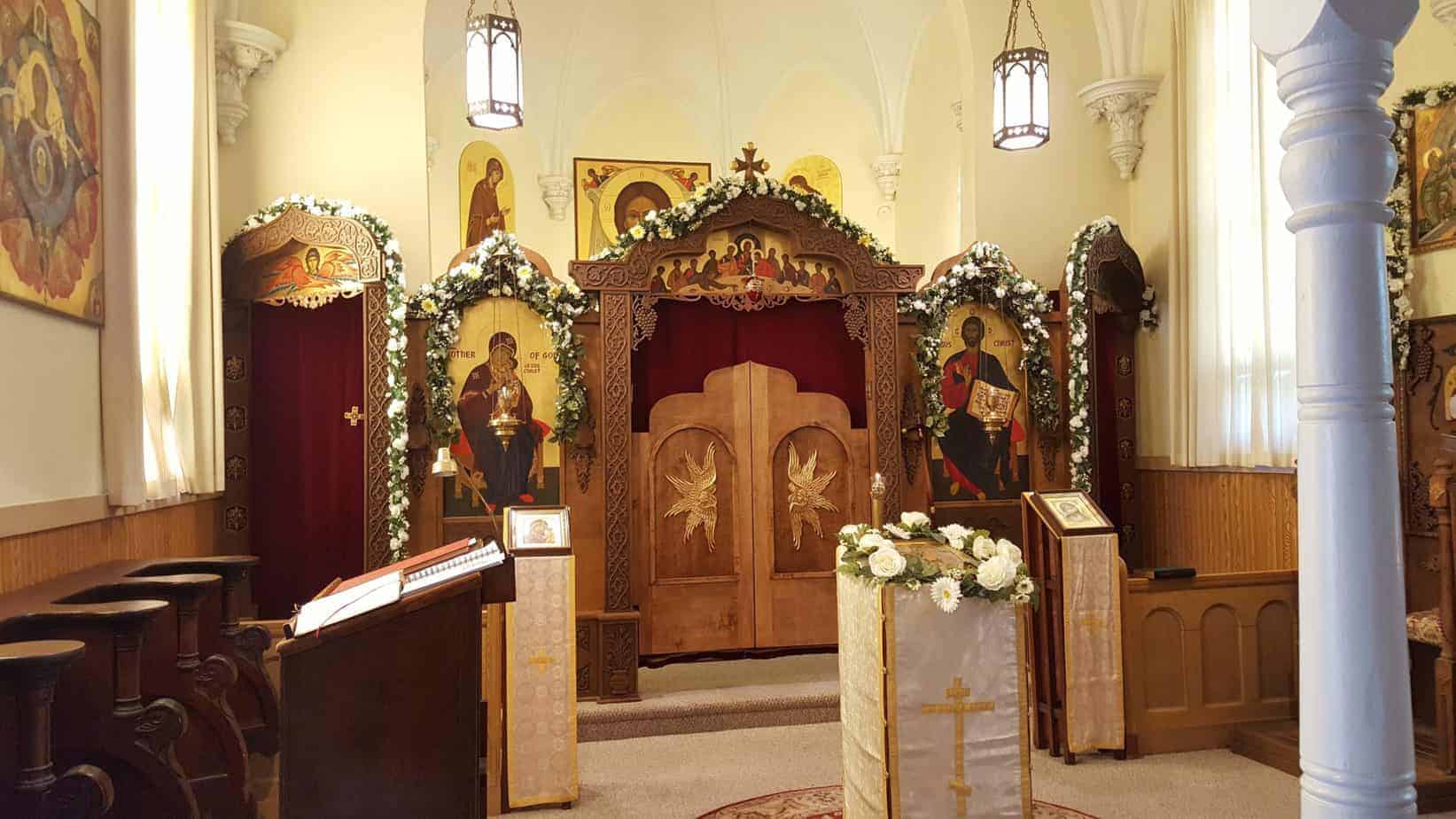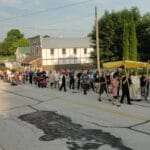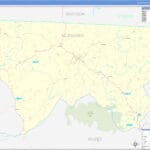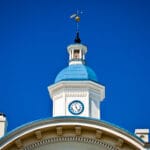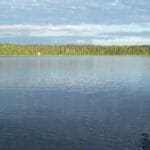St. Nazianz, Wisconsin, nestled in the rolling hills of Manitowoc County, is more than just a picturesque village; it’s a living testament to faith, resilience, and a unique chapter in Wisconsin’s history. Founded in 1854 by the visionary Father Ambrose Oschwald, this small community of approximately 800 residents harbors a story as rich and intricate as the architecture of its historic buildings. Join us as we journey through time, exploring the captivating tale of St. Nazianz, from its utopian beginnings to its present-day charm.
A Pilgrim’s Progress: The Founding of St. Nazianz
In 1854, a band of 113 German Catholic pilgrims, led by Father Ambrose Oschwald, embarked on a transatlantic voyage, seeking religious freedom in the heart of Wisconsin’s wilderness. Inspired by the writings of St. Gregory of Nazianzus, the village’s namesake, they envisioned a utopian community, a “New Jerusalem” built on shared faith and communal living. Their arrival marked the genesis of St. Nazianz, a village whose story would unfold through perseverance, adaptation, and a deep connection to its spiritual roots. This initial communal structure, with shared resources and a daily life steeped in religious practice, likely faced challenges establishing the settlement. Harsh Wisconsin winters, unfamiliar terrain, and the basic necessities of survival likely tested their resolve. Further research into these early years could reveal compelling tales of how these settlers from Germany’s Black Forest region overcame these hardships, adapting their Old World skills to their New World home.
Landmarks of Faith and History
The Holy Resurrection Monastery: A Beacon of Byzantine Tradition
Nestled among the gentle slopes of Manitowoc County, the Holy Resurrection Monastery stands as a beacon of Byzantine Catholic tradition, its golden domes reflecting the spiritual aspirations of those who seek solace within its hallowed walls. This unique monastery, in union with Rome, offers a haven for spiritual renewal and quiet contemplation through retreats and spiritual activities. Visitors can also find handcrafted treasures made by the monks, tangible expressions of their devotion and skill.
St. Ambrose Church: Whispers of Generations Past
St. Ambrose Church, a stately edifice with timeless architecture, stands as a testament to the village’s enduring Catholic heritage. Its very stones seem to whisper tales of generations past, echoing the prayers and hymns that have resonated within its walls for over a century and a half. Further research into the church’s specific architectural style and historical details could enhance our appreciation of this central landmark.
St. Nazianz Historical Society Museum: Preserving the Threads of Time
The St. Nazianz Historical Society Museum acts as a guardian of the village’s rich history, safeguarding artifacts and documents that bring the past to life. From everyday tools to cherished photographs, the museum offers a glimpse into the lives and experiences of those who shaped St. Nazianz. Exploring its exhibits can reveal the evolution of the village from communal beginnings to its present identity. What stories do these artifacts tell? What can we learn about the daily lives, hopes, and dreams of St. Nazianz’s early residents?
Father Oschwald’s House: A Window into the Founder’s Life
The modest dwelling of Father Ambrose Oschwald provides a unique window into the personal life of the village’s founder. This simple structure offers a poignant contrast to the grandeur of the monastery and church, hinting at the humility and dedication of the man who spearheaded this ambitious undertaking. Is the house open to the public? What insights can it offer into Oschwald’s vision and the challenges he faced? Further research could illuminate the personal story behind the public figure.
Nature’s Embrace: Trails and Tranquility
Venture beyond the village limits, and you’ll discover a network of scenic trails threading through verdant forests and alongside tranquil streams, offering a respite from the modern world. Whether you prefer hiking or biking, exploring these natural havens provides a chance to connect with the quiet majesty of the Wisconsin landscape. Identifying specific trails, parks, or nearby bodies of water could enhance this section and provide practical information for visitors. Are there opportunities for fishing or wildlife watching? Highlighting these options can enhance the appeal of St. Nazianz as a destination for nature lovers.
From Utopia to Village: A Community’s Evolution
St. Nazianz’s journey from a religious commune to a more conventional village structure marks a pivotal chapter in its history. This transition, which likely occurred gradually over decades following the 1904 Golden Jubilee celebration, raises intriguing questions. What prompted this shift? Were there internal pressures, economic factors, or external influences that led to this transformation? Exploring this evolution adds depth and complexity to the village’s narrative. How did this change impact the residents’ sense of shared identity and purpose? Examining the social and cultural implications of this transition can provide a richer understanding of the community’s development.
Leading Figures and Their Legacies
The story of St. Nazianz is interwoven with the lives of its notable residents. Joseph Filz, a Wisconsin State Representative, and Victor A. Miller, who served as Wisconsin Attorney General, both called St. Nazianz home. Their contributions extended far beyond the village borders, shaping the political and social landscape of Wisconsin. Further research into their specific achievements and their connection to St. Nazianz could enrich this section and highlight the village’s impact on the wider world. How did their experiences in St. Nazianz influence their careers and public service? Exploring this connection can add a personal dimension to their stories and connect their legacies to the village’s narrative.
Discovering St. Nazianz Today
Today, St. Nazianz (44°0′21″N 87°55′25″W, elevation 856 feet), easily accessible via I-43 and other state highways, welcomes visitors to experience its blend of history, spirituality, and natural beauty. Whether you’re drawn to its unique past, seeking a peaceful retreat, or simply exploring the Wisconsin countryside, St. Nazianz offers a captivating glimpse into a community that has embraced both tradition and change. Perhaps a visit to St. Nazianz is in your future?
Unraveling the Name: How to Pronounce St. Nazianz
The name itself, often a source of confusion, reflects the village’s historical roots. Pronounced “saint NAZ-ee-anz,” with the emphasis on the first syllable of “Nazianz,” the name derives from St. Gregory of Nazianzus, a fourth-century theologian and Archbishop of Constantinople. The evolution of the name’s pronunciation, from its Greek origins to its current form, offers a fascinating glimpse into the fluidity of language. While “saint NAZ-ee-anz” is the accepted local pronunciation, variations like “Naz-ee-ants” or “Nay-zee-anz” are understandable, reflecting attempts to apply familiar phonetic patterns to an unfamiliar word.
Exploring Further: Untapped Potential
This historical profile, though comprehensive, merely scratches the surface of St. Nazianz’s rich tapestry. Further research into the transition from religious commune to modern village, the influence of German Catholic culture, and the life of Father Ambrose Oschwald could uncover even more compelling stories. Comparing St. Nazianz with other historical religious communities in the US could provide valuable context and highlight its unique characteristics. What role did economics play in the village’s development? How did residents maintain their sense of community during periods of change? These questions invite further exploration and offer the potential to delve even deeper into the heart of St. Nazianz.
Uncover crucial property tax information with the Stanislaus County Tax Collector. Delve into the comprehensive tax regulations and resources provided by the State of Rhode Island and Providence Plantations Division of Taxation for up-to-date guidance.
